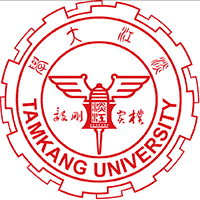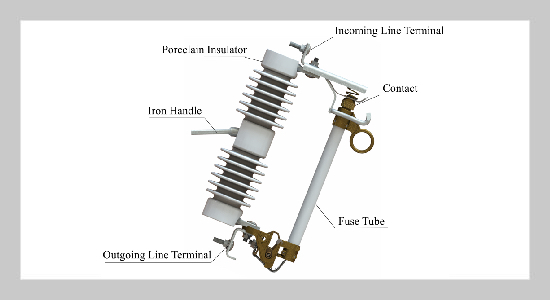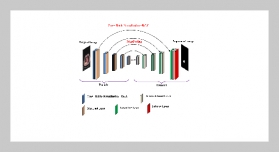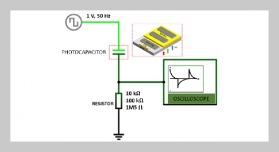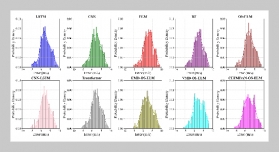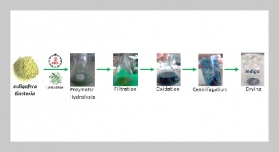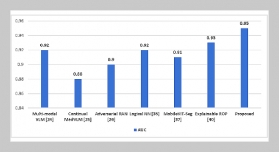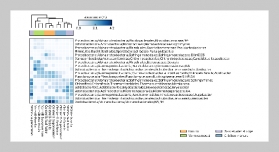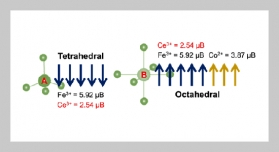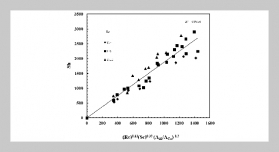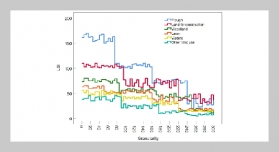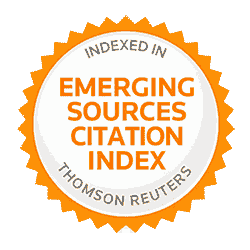- [1] C.Lothongkam, T.Patcharoen, and S. Yoomak,(2023) “Effect of the drop out fuse connection scheme on the over voltage and the surge arrester in a distribution system" Energy Reports 9: 41–47. DOI: 10.1016/j.egyr.2023.08.058.
- [2] Q. Yang, X. Rong, R. Guo, H. Zhao, and Y. Zhao, (2022) “Real-Time Detection of Insulators and Drop Fuses Based on Improved YOLOv4" Scientific Programming: 5755265. DOI: 10.1155/2022/5755265.
- [3] F. Wang, Q. Zhao, Y. Zhao, Z. Xu, H. Wu, T. Mu, H. Duan, and W. Yi, (2019) “Analysis and Study on Material and Temperature Rise Test of 10kV Drop-Out Fuses" High Voltage Apparatus 55(1): 80–86. DOI: 10.13296/j.1001-1609.hva.2019.01.013.
- [4] B. Qi, Y. Zhang, X. Yang, Z. Yang, L. Lu, F. Yan, and C. Li, (2023) “An Advanced Ceramic Material for Internal Insulation Used in Gas-Insulated HVDC Apparatus" IEEE Transactions on Dielectrics and Electrical Insulation 30(2): 556–562. DOI: 10.1109/TDEI.2023.3247680.
- [5] R. Gao, Z. Zhou, H. Zhang, X. Zhang, and Y. Wu, (2024) “High-temperature service stability of a novel ce ramic composite insulation material" Ceramics International 50: 30402–30410. DOI: https://doi.org/10.1016/j.ceramint.2024.05.337.
- [6] S. Wang, T. Chen, F. Teng, L. Liu, and X. Ren, (2021) “Design of a Novel 12 kV Drop-Out Fuse Based on Shape Memory Alloy" High Voltage Apparatus 57(10): 176–181. DOI: 10.13296/j.1001-1609.hva.2021.10.022.
- [7] F.Wang, B.Li, W.Yi, Y.Zhao, andF.Lang,(2021) “Operating Characteristics and Experimental Study of 12 kV Drop-out Fuse" Northeast Electric Power Technology 42(8): 12–15.
- [8] W.Guo, X.Chen, and S. Chen, (2020) “Location Analysis and Prevention Strategies for a Breakdown Fault in a GIS Internal Busbar Support Insulator" Electric Porce lain and Arrester (05): 248–253. DOI: 10.16188/j.isa.1003-8337.2020.05.041.
- [9] Q. Sun, L. Wang, J. Fu, R. Zhang, Y. Zhou, and J. Zou, (2023) “Study on Fracture Caused by Uneven End Face of Porcelain Insulator Support Platform" Electric Porcelain and Arrester (3): 183–188. DOI: 10.16188/j.isa.1003-8337.2023.03.026.
- [10] Z. Ju, W. Xing, W. Duan, H. Sun, X. Sun, and S. Liu, (2021) “Research on Status Monitoring and Fault Alarm Device of Drop-out Fuse" Journal of Physics: Con ference Series 1952(3): 032084. DOI: 10.1088/1742-6596/1952/3/032084.
- [11] Q. Sun, L. Wu, K. Lu, X. Liu, J. Jin, and D. Xu, (2023) “Causes of Fractures in Suspension Porcelain Insulators" Physical & Chemical Inspection- Physics Section 59(07): 61–63. DOI: 10.11973/lhjy-wl202307016.
- [12] X. Wu and P. Wei, (2011) “Failure Cause Analysis of a 220 kV Isolating Switch Porcelain Insulator" Electric Porcelain & Arresters (06): 11–14+20. DOI: 10.16188/j.isa.1003-8337.2011.06.003.
- [13] B.Wang, D.Zhang, Z.Yan, R.Yang, Q.Huang, B.Ma, and Z. He, (2020) “Simulation Study on the Influence of Temperature on the Mechanical Properties of Porcelain Post Insulators" High Voltage Apparatus 56(4): 74–79. DOI: 10.13296/j.1001-1609.hva.2020.04.012.
- [14] E. Zhang, Y. Yang, W. Song, X. Wei, Z. Qiu, J. Ruan, and D. Huang, (2014) “Thermal Stress Analysis of High Voltage Porcelain Post Insulator" Applied Mechanics & Materials 521: 366–370. DOI: 10.4028/www. scientific.net/AMM.521.366.
- [15] Z. Liu, W. Bi, X. Chen, J. Chen, D. Qi, and Y. Jiao, (2020) “Structural Optimization Design of Metal Fit tings for Porcelain Post Insulators" Electric Porcelain &Arresters (04): 228–232. DOI: 10.16188/j.isa.1003-8337.2020.04.03.
- [16] R. Yang, X. Kong, Z. Lu, Q. Wang, M. Zeng, and S. Zhou, (2017) “Volume Deformation Performance and Mechanism of Cement Stone Under Water and Oil Ab sorption" Journal of the Chinese Ceramic Society 45(2): 182–189. DOI: 10.14062/j.issn.0454-5648.2017.02.02.
- [17] X. Ding, H. Zhao, and S. Huang, (2021) “Study on Expansion Deformation Evolution Law of Rock Based on Hygroscopic–Expansion Analysis Model" Chinese Journal of Rock Mechanics and Engineering 40(102): 3005–3013. DOI: 10.13722/j.cnki.jrme.2021.0603.
- [18] Q. Wu,(1989) “Mechanism of Expansion Failure in Ce ment Adhesive Used in Porcelain Suspension Insulators" Electric Porcelain and Arrester (1): 34–42. DOI: 10. 16188/j.isa.1003-8337.1989.01.007.
- [19] P. Zhang, Y. Li, W. Wang, T. Ma, M. Cai, X. Yang, and D.Zhang,(2017)“Cement-Based Adhesives for Electrical Porcelain and the Necessity of Standard Revision" Electric Porcelain and Arrester (6): 177–180, 186. DOI: 10.16188/j.isa.1003-8337.2017.06.032.
- [20] JB/T4307-2004 Cement Adhesive for Insulator Assembly. Xi’an Electric Porcelain Research Institute. China: China Standards Press, 2007.
- [21] H.Chen, J.Zhang, D.Cong, M.Zhang, K.Song, Z.Li, and L. Xie, (2022) “Finite Element Simulation of Temperature Field and Residual Stress for Tungsten Coating by Electric Spark Deposition" Surface Technology 51(1): 140–149. DOI: 10.16490/j.cnki.issn.1001-3660.2022.01.015.
- [22] Z.Zeng,B.Xu,S. Hu,andC.Chen,(2014) “Numerical Analysis of Expansive Soil Tunnel Lining Failure Under Moistening Conditions" Rock and Soil Mechanics 35(3): 871–880. DOI: 10.16285/j.rsm.2014.03.045.
- [23] C. Fan, (2017) “Numerical Simulation Study on Hygroscopic Expansion Characteristics of Expansive Soil in Hefei" Geotechnical Engineering 31(6): 753–757.
- [24] J. Yang, W. Zhao, and W. Zhao, (2018) “Numerical Analysis of Tunnels in Expansive Surrounding Rock with Different Water Contents" Science & Technology In novation and Application (10): 1–4, 7. DOI: 10.19981/j.cn23-1581/g3.2018.10.001.
- [25] Y. Lang, J. Zhao, C. Wang, and B. Liu, (2014) “Fracture Behavior of Porous Ceramics with Medium Porosity Under Compression" Journal of the Chinese Ceramic Society (12): 1528–1536.
- [26] Q. Li, X. Yin, K. Guo, and S. Xu, (2022) “Experimental Study on the Interfacial Shear Strength Between Ultra High Toughness Cementitious Composites and Reactive Powder Concrete" Engineering Mechanics 39(8): 232 244.
- [27] S. Xu. “Research on Mechanical Deformation Characteristics of Disc Suspension Insulators in Extremely Cold Regions". (mathesis). Hubei University of Technology, 2019.
- [28] S. M. A. HuFang, S. M. A. Bozhong Lin, and M. A. Yao Yao, (2024) “Mechanical Properties of the Interface between Reactive Powder Concrete and Aggregates at Different Temperatures" Journal of Engineering Mechanics 150(12): 04024086. DOI: 10.1061/JENMDT. EMENG-7510.
- [29] M.Chen, (2018) “Analysis of Mechanical Properties and Critical Crack Size of Porcelain Post Insulators in Low Temperature Environments" Electric Porcelain and Arrester (4): 217–222. DOI: 10.16188/j.isa.1003-8337. 2018.04.038. [30] Y. Zhou. Ceramic Materials Science. Harbin Institute of Technology Press, 1995.
